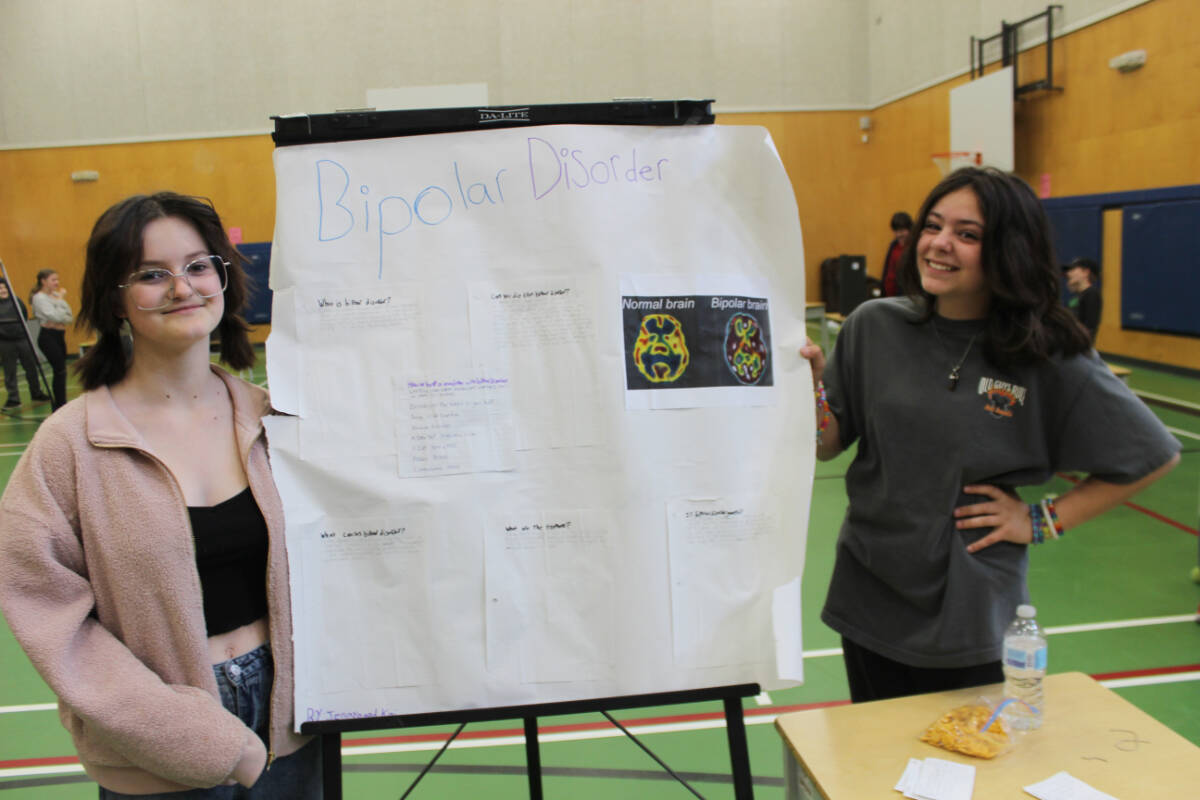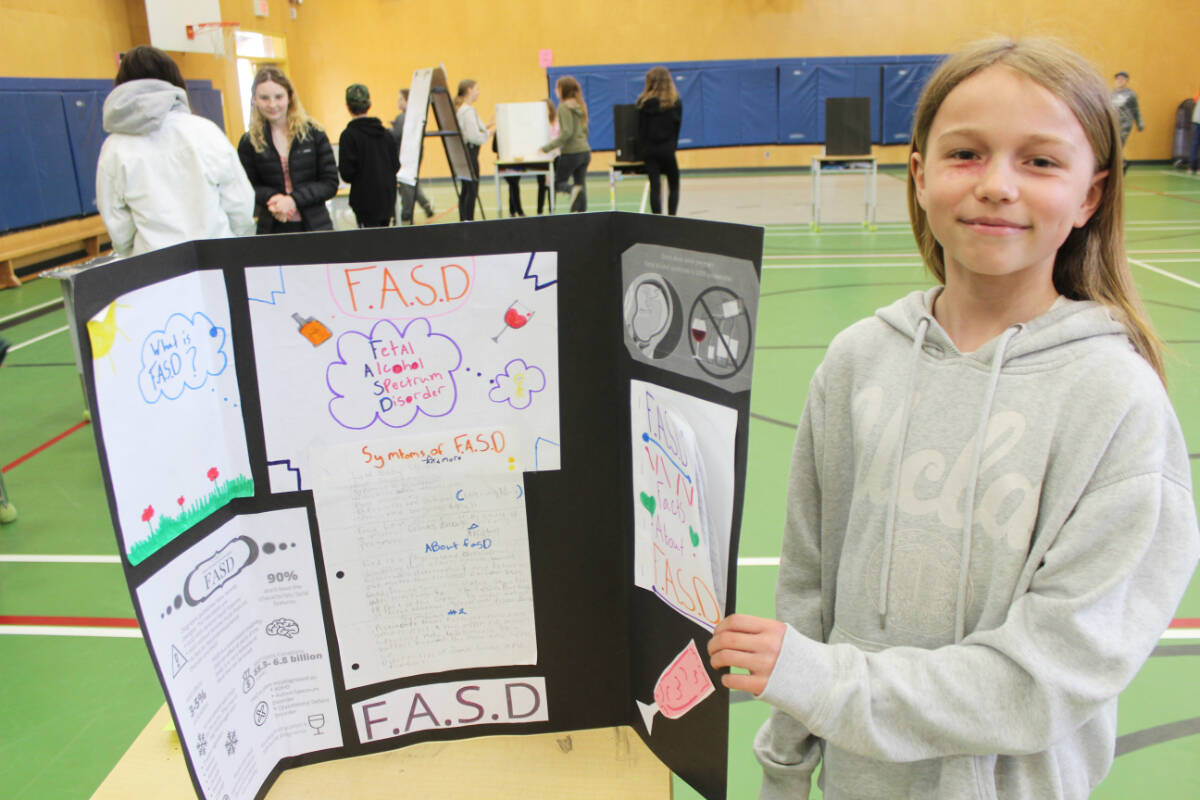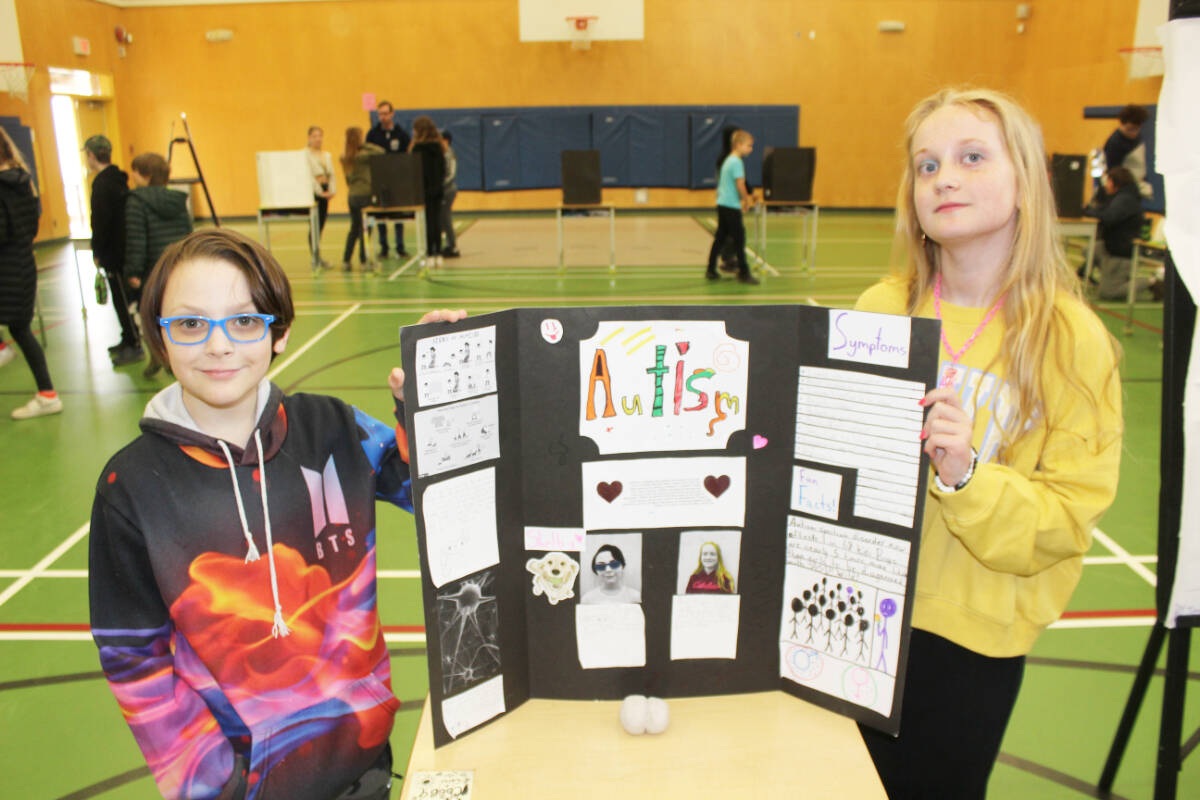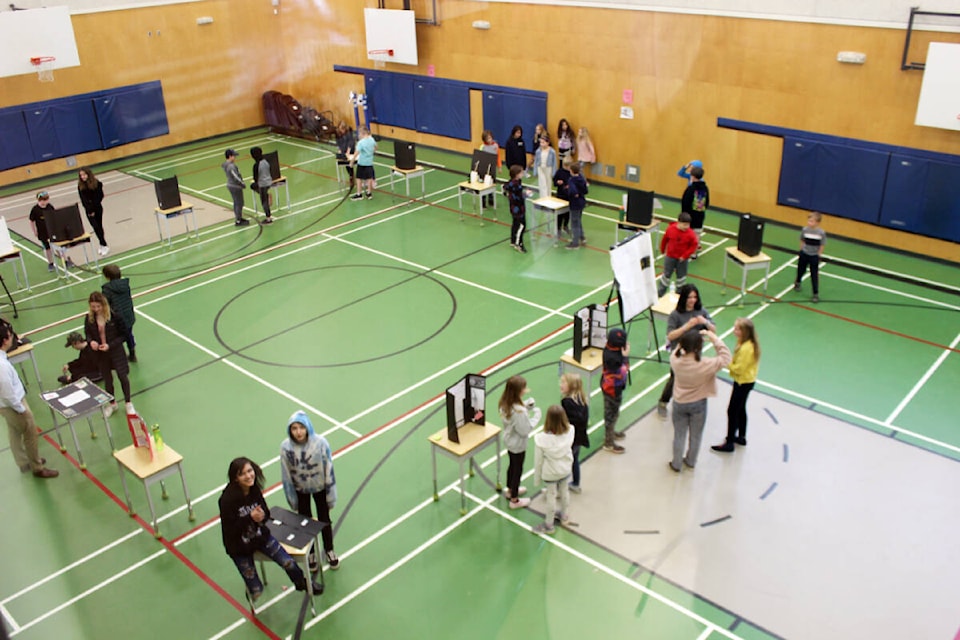Appearances can be deceiving and students at Crofton Elementary School brought some of those situations into the open with their school project on invisible disabilities.
The Grade 5-6 students in classes taught by Alex Hall and Cassie Ward had their displays set up in the gym last Wednesday, April 20 for public viewing from parents and also spoke about what they learned from the assignment.
“Part of it is they want to share their learning,” said principal Tim Ylagan. “It’s also promoting understanding in our school community.”
Related story: New Crofton Elementary principal feels privileged for the opportunity
Ylagan credited Hall and Ward for coming up with the idea and mentioned it was nice to have a showcase event in the school again after two years of COVID limitations.
“It’s one of the first things like this we’ve been able to do,” added Hall. “All the kids in the school came down and families came down.”
Two elements were combined to form the basis for the project, according to Ward.
“We read a book A Fish in a Tree,” she indicated. “The main character has dyslexia, an invisible disability. We also studied the human body.”
Fish in a Tree is a 2015 novel by American author Lynda Mullaly Hunt. The story follows a middle-school girl named Ally, who is artistically and mathematically talented but unable to read due to her dyslexia.
The students researched and presented a variety of such disabilities in their projects.
“We had them all select an invisible disability, ranging from dyslexia to bipolar disorder to food allergies,” added Hall.
The students’ research aimed to reveal what it’s like for people to deal with various conditions on a daily basis.
“We’re hoping we can open some people’s eyes and create that understanding and acceptance,” said Hall. “We’re all different. Our students were really engaged and excited to share with all their peers.”
“I think it’s brought more awareness and attention to them that teach a lot of people in the world about invisible disabilities,” noted Ward. “Just because you can’t see it, doesn’t mean it isn’t there.”
Brooklyn White and Zander Meyer, students in Ward’s class, did their project on autism. It was especially an eye-opener for Meyer to learn more about himself since he has autism.
“Autism and spectrum disorder affects one in 68 children today,” pointed out White. “Men actually are five times more likely to be diagnosed than women.”
Ryder Brown, a Grade 5 student in Ward’s class, did her project on fetal alcohol spectrum disorder.
“I just thought it would be a cool project to do, lots of information,” she said.
Brown learned that FASD occurs in one of every 1,000 people “and that two people with fetal alcohol spectrum disorder can be completely different. Some people can have emotion regulation issues and some can have attention issues.”
Kai Rochon and Jenaya Grattan, who are in Hall’s Grade 6 class, discovered the brain was pivotal in bipolar disorder.
“I didn’t know the brain would be different from a normal brain,” said Grattan. “The other thing is that it’s genetic.”
That was the most surprising and interesting finding to Rochon, who said she knew a little bit about it at the start of the project. Like the other students with their topics, she was a lot more knowledgeable at the end of it.
@chemainusnews
don.bodger@chemainusvalleycourier.ca
Like us on Facebook and follow us on Twitter.



